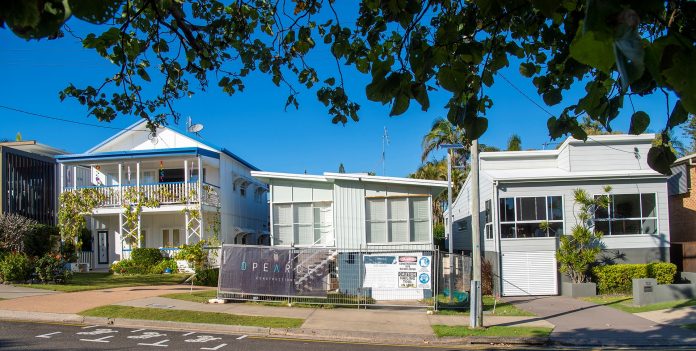Humble beach shacks that epitomise the Sunshine Coast’s laid back lifestyle are being demolished at a faster rate as buyers rush to build expensive homes in desirable locations by the sea.
Fibro shacks, weatherboard houses and little brick boxes that were designed as basic holiday getaways in the 40s, 50s, 60s and 70s are vanishing, and with them goes an important part of the region’s cultural heritage, says local architect Roger Todd.
Suburbs on the southern end of the Coast like Dicky Beach and Shelly Beach have lost many irreplaceable examples and more are destined for the wrecking ball.
Even Moffat Beach, which was last year given protection as a ‘Character Area’ under the Sunshine Coast Council’s town plan, is set to lose more beach houses this year, with applications lodged for demolition.
Moffat had about 140 shacks in the years up to 1972 but around half have been lost, and more vanish each year.
Mr Todd said that in the eagerness to build new houses, people were not even thinking twice about destroying an old one.
“I think it (knocking down shacks) has been speeding up with the latest real estate boom,” he said.
Do you have an opinion to share? Submit a Letter to the Editor with your name and suburb at Sunshine Coast News via: news@sunshinecoastnews.com.au
“We probably won’t get away with forcing (buyers) into re-education camps, but it would be great if there were packages available so people could get an understanding of the place and how it’s different to other states.”
Demand for property on the Sunshine Coast has gone through the roof since about January but with so few available blocks by the sea, buyers are snapping up old homes and either gutting or getting rid of them.
Mr Todd said he was concerned that southern buyers from NSW and Victoria would have little appreciation, or understanding, of the unique character of the Coast, which held many of the last surviving beach shack neighbourhoods on the eastern seaboard.
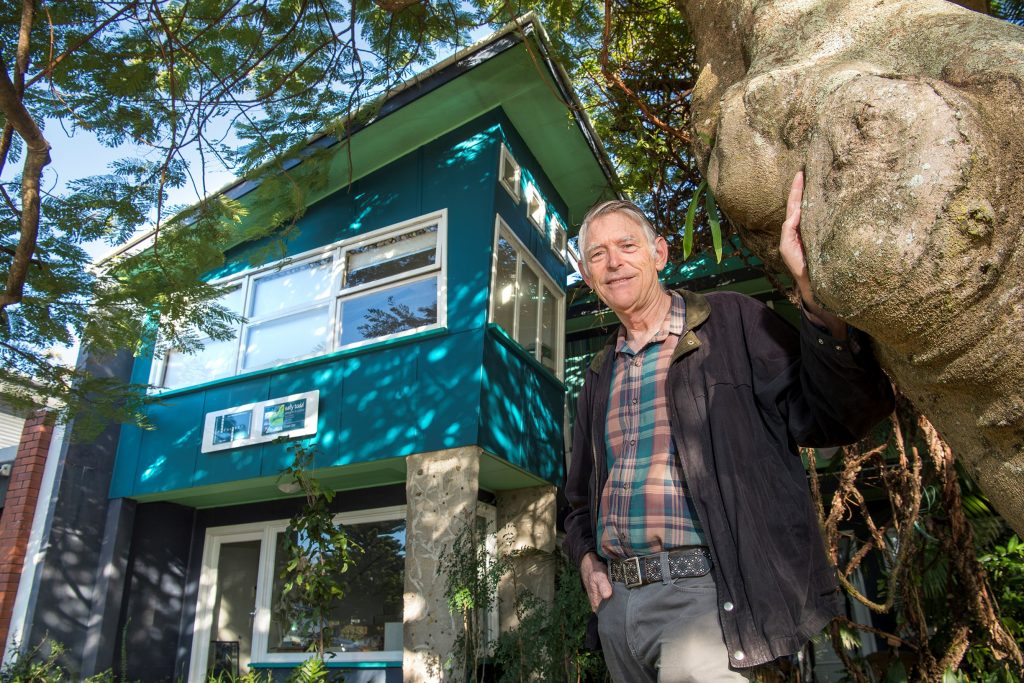
Mr Todd, whose own blue shack on Campbell Street (above) has been designated ‘heritage significance’, was a key advocate behind a project to document Moffat Beach’s historic homes and has been keeping records as they “disappear before our eyes”.
He said the story of beachside living really took off when the rationing and hardship of World War II ended and there was great optimism. There was a building boom in Australia and holidaying at the beach became entrenched in the lifestyle.
Caloundra in particular, because of its proximity to Brisbane and Toowoomba, was a popular destination for city holidaymakers and the beach suburbs began to overflow with easy-living houses.
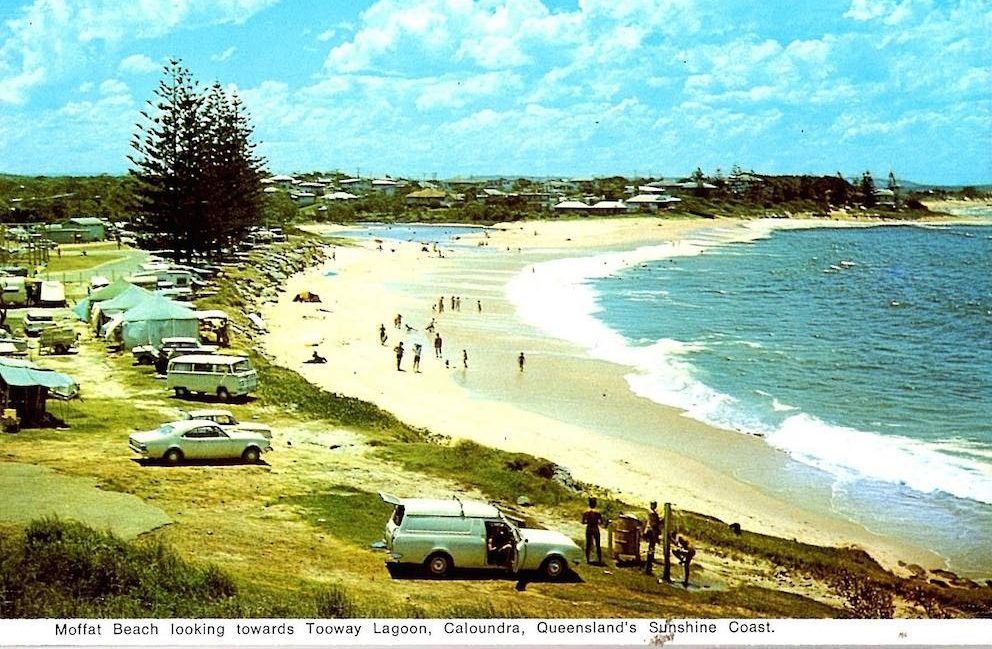
“Beach houses were peculiar because they were not big budget houses, they were really minimalist because it was hard to look after them when your primary home was in Brisbane,” Mr Todd said.
A beach house was basically “the next step up from camping” and the emphasis was simplicity and informality as they were used mostly on weekends and holidays and were not designed for permanent residency.
The houses were small and rectangular, often with a skillion roof and didn’t take up the whole block which itself was usually narrow.
The preferred building material was fibro — usually Hardie’s Fibrolite and Super Six — or weatherboard.
Yards were also simple because the emphasis was the beach, not the garden, and there were no tall fences barricading homes from the street.
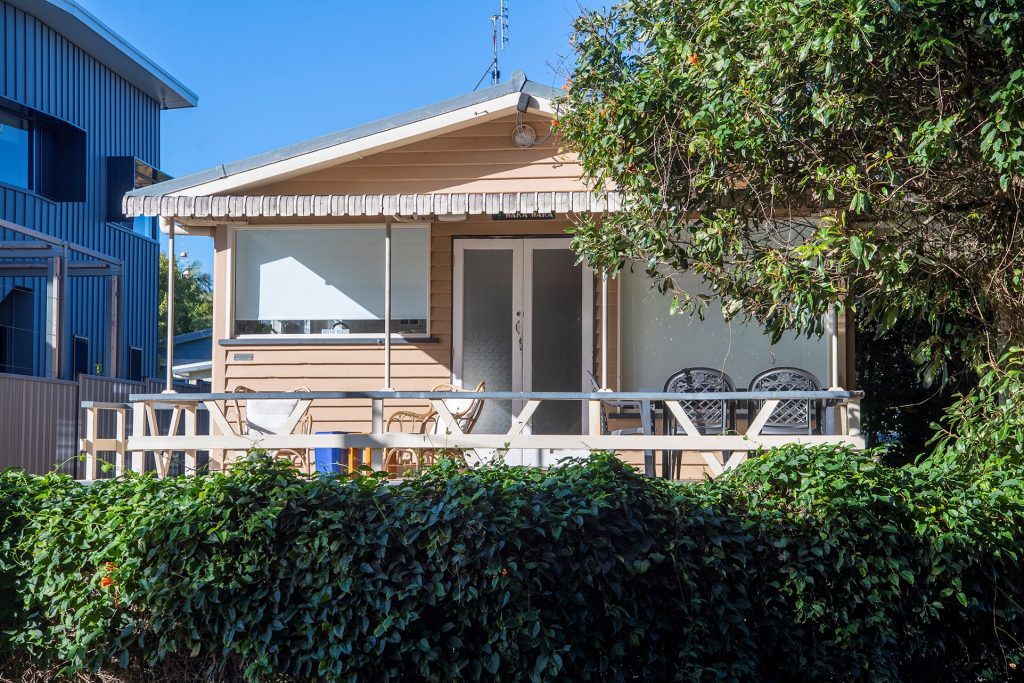
Today, however, Mr Todd said many modern homes going up in the area were “heavy”, double-storey and gargantuan, spreading across most of the block, with walls, fences and double garages.
Mr Todd said current architecture styles often did not take into consideration the Coast’s cultural history and this was changing the character of our beach suburbs.
He said the value of the old shacks was poorly understood, especially by newcomers, and that cherished era of history could be lost to future generations.
“It’s a spartan existence which is not for everyone,” Mr Todd said about the simple, no frills lifestyle.
Mr Todd encouraged more people to consider adapting the existing house rather than demolishing it but if that was not possible to at least try and retain some of the original “story”.
Help keep independent and fair Sunshine Coast news coming by subscribing to our free daily news feed. All it requires is your name and email. See SUBSCRIBE at the top of this article
Since Moffat Beach gained ‘Character Area’ protection in 2020, homeowners are required to consider the area’s aesthetics and seek the approval of council to demolish or renovate.
They are urged to build homes that take into consideration the older designs using lightweight materials, a skillion roof, facing the street and window design while fences are discouraged.
A number of applications have been lodged since the changes came including 13 Nothing Street which is a lesser example of a beach house.
That house is destined to be replaced with an architecturally designed “lightweight coastal” styled home with fibre cement, timber cladding, tin roof and louvres which Mr Todd said was not really characteristic of the area.
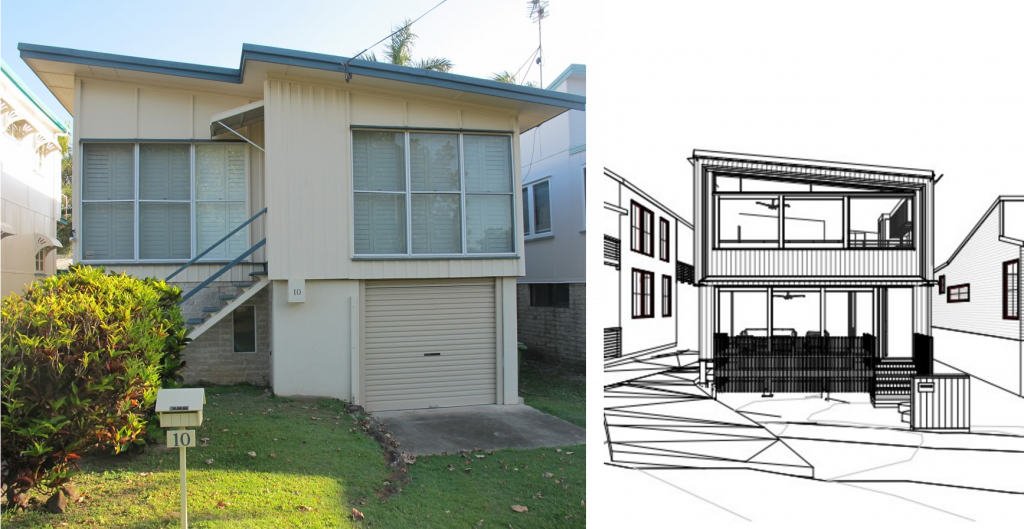
Mr Todd said another quaint shack overlooking Moffat Beach on Bryce Street, where there’s row of well-maintained original beach homes, was also to be knocked down but he was not concerned about that one because it was to be replaced with “an exemplary piece of architecture” by award-winning Richard Kirk.
“I’m relaxed that we’re going to lose a house but we will get another house that suits the area and suits the beach character,” he said.
The house at 10 Bryce Street has been identified by the council as a building that was an “important contributor” to Moffat beach’s character along with 23 and 36 Bryce Street.
Inspiring beach design
To inspire the community to consider designing homes and buildings that reflect the lifestyle and characteristics of the region, the Sunshine Coast Council launched the Sunshine Coast Design book, commonly knowns as the ‘Yellow Book’ .
“The book doesn’t push a certain architectural or landscape style, rather it encourages the consideration of our lifestyle values and the design principles to inform good design for home builders, engineers, designers and the development industry,” said a council spokesperson.

The book includes a case study of a Moffat Beach renovation and extension to a 1950s beach house (pictured) that “exemplifies” such designs principles.
The extension goes up, adding another level to the house, rather than ‘out’, so that the existing landscape and private open space is retained.
“This renovation and extension is a good example of respecting a place’s qualities, working well with the climate and designing new elements that create a beautiful indoor/outdoor lifestyle that we have come to expect on the Sunshine Coast and particularly in Moffat Beach.”
The Sunshine Coast Design book is free to download here or can be purchased here.


